Have you ever unmolded a batch of soap and it was like unmolding Play-dough…your soap is too soft? For me personally, there is nothing worse. If I can’t unmold and cut a loaf of soap as planned, I get grumpy.
I also get this question a ton, so wanted to write a blog post. If you have any ideas to offer or tips to share, please post in the comments. I’d love to hear about your experience with soft soap.
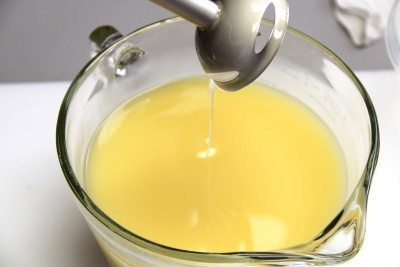
So what happened?
If it was your normal recipe that usually comes out hard…here are some ideas.
Not enough sodium hydroxide was added.
Could you have mis-measured or mis-calculated the amount of lye used? Did you double a batch of oils but forget to double the lye solution used?
Master-batching can cause issues if you don’t calculate correctly or use master-batched lye and oils in the wrong way. For master-batching directions and tips, check out my eBook, Master-Batching Oils and Lye for Soapmaking!
If you feel like you used the correct amount of sodium hydroxide, check your scale. If it is battery-run, change the batteries. Always use a scale with a wall plugin if you have one. This helps cut down on issues related to scale batteries going low.
If you did not use enough lye and are able to calculate the amount needed, you can re-batch and add the needed amount.
Could you have a sodium hydroxide storage issue? SH loves to suck in moisture from the air. When not stored in an airtight container, it will take on moisture and turn into hard chunks. When you go to measure it, you are actually measuring the sodium hydroxide + water so you will be short. Be sure to close up your sodium hydroxide immediately and make sure it is stored in an airtight container.
Too much water was used.
Could you have mis-measured the amount of water used? Did you half a recipe and forget to use less water?
Did you use your regular water amount but add another liquid, veg puree, or something similar, to your soap? For example, did you use regular water, but also add 4 oz. of milk to your traced soap? This extra liquid can create a softer soap.
If you are using a new recipe, what is the water percentage that is given? Some recipes online and in books simply use a high amount of water. Soap made with a high amount of water will simply need more time to unmold and cure. My standard water is 2 times the lye. I’ve seen recipes that use 3 times the lye and even 4 times the lye! Higher amounts of liquid will result in a softer soap.
Did your soap gel?
Gel phase will effect how hard your soap is once saponified. If your soap does not go through gel phase, it will be softer upon unmolding. It can even be soft and crumbly, with the corners breaking off in the mold upon unmolding. If your soap does not go through gel phase, you might wait an extra 24-48 hours before unmolding.
Soap that goes through gel phase is usually harder upon unmolding and can be unmolded after 24 hours of pouring.
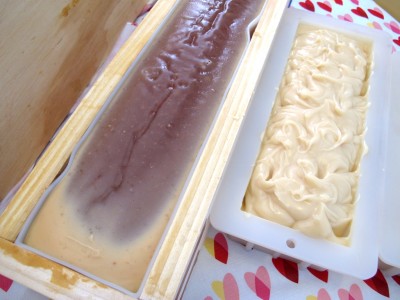
Formulation issues.
Does your recipe contain a high amount of soft oils?
Soft oils are generally oils that are liquid at room temperature such as olive oil, castor oil, avocado, sunflower, safflower, sweet almond, rice bran…etc. As a general rule, soap made from a high percentage of these oils will be on the softer side. The only exceptions to this rule are olive oil and castor oil. Soap made from a high percentage of olive oil and castor oil will cure to be a really hard bar of soap. Although high quantities of castor will harden up a bar of soap, it will also cause the bar of soap to be sticky and draggy.
Most of my recipes contain a high amount of olive oil. So although they are initially softer upon unmolding, especially if they don’t go through gel phase, they cure out to be a hard bar of soap.
If your soap contains a high amount of liquid oils that do not turn hard (such as rice bran, sweet almond, jojoba oil…etc.) then your soap will stay pretty soft. As it cures, it will harden a bit, but make sure you have coconut oil, butters, castor oil or olive oil to balance it out.
Soap made with high percentages of soft oils tends to be softer and stickier when un-molding. Simply leave them in the mold a day or two longer before un-molding and cutting. If you are using single cavity molds, you can try freezing them to harden and hopefully the soap will pop out easier.
Sometimes we just don’t know what has happened. Moving forward, here are some tips.
- Run any recipes that you find online or in a book through a lye calc to make sure the recipe is correct.
- When doubling or halving a recipe, run it through a lye calc just to make sure the new recipe is correct.
- Use a scale that plugs into the wall. If you can’t, because of space or other issues, change the batteries regularly.
- Store your lye in an airtight container.
What tips do you have for those with soft soap? Leave a comment!
-Happy Soaping!
Amanda Gail

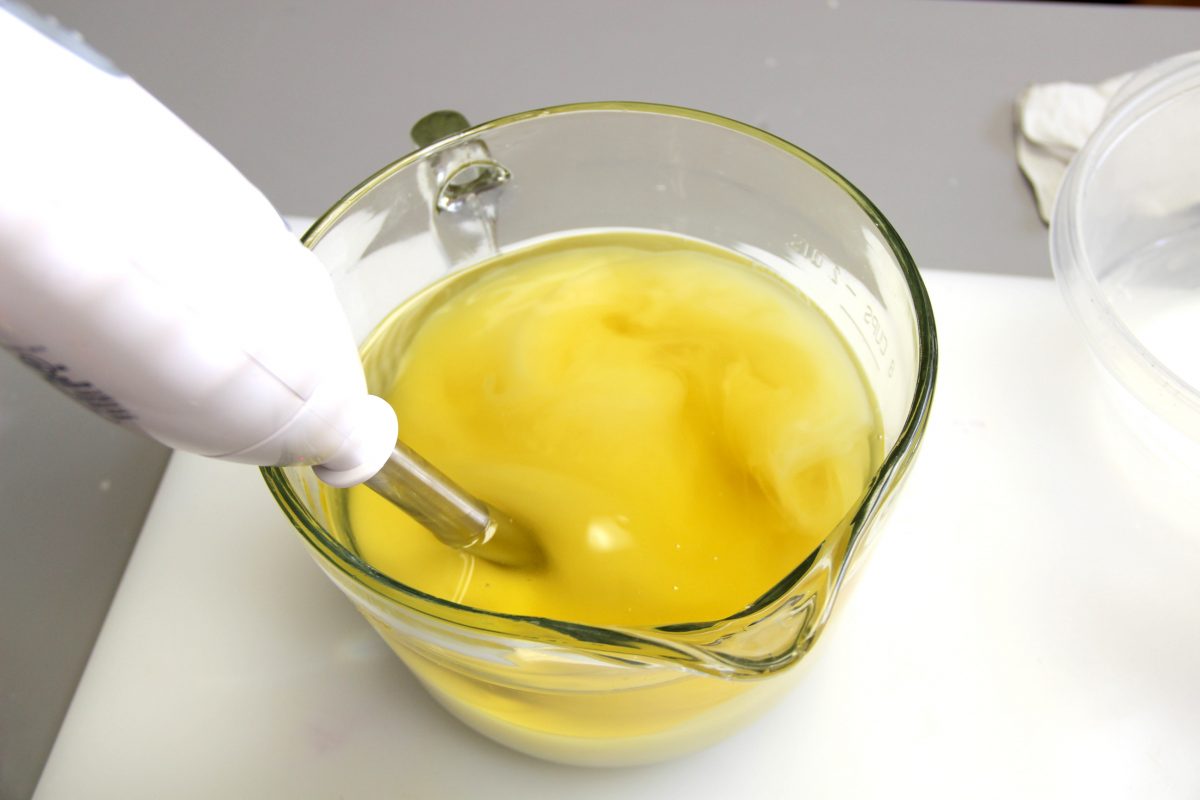
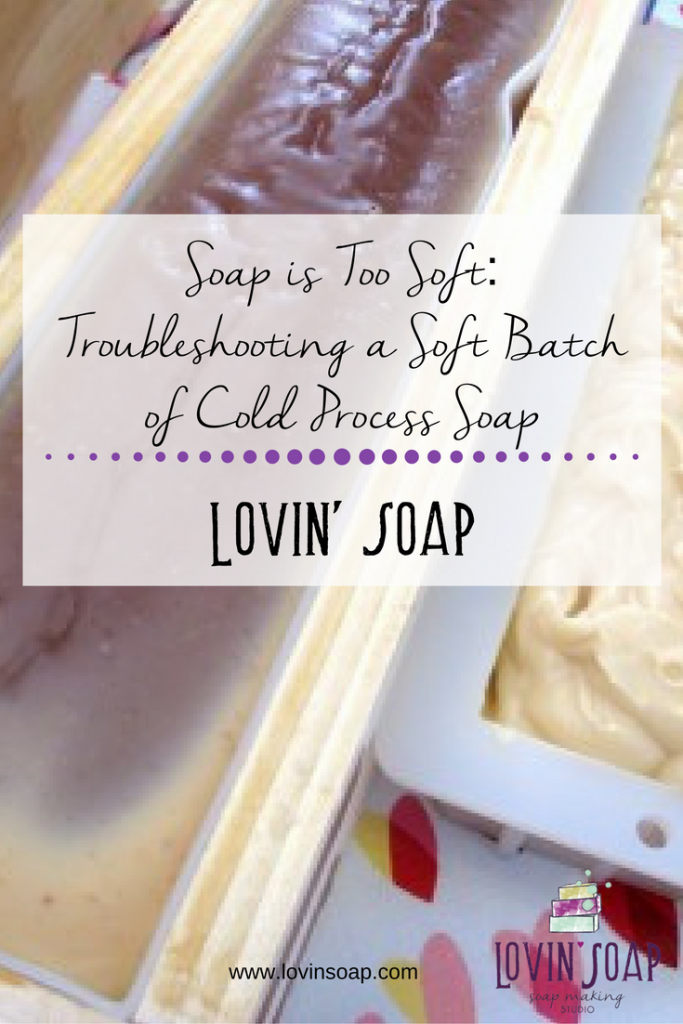

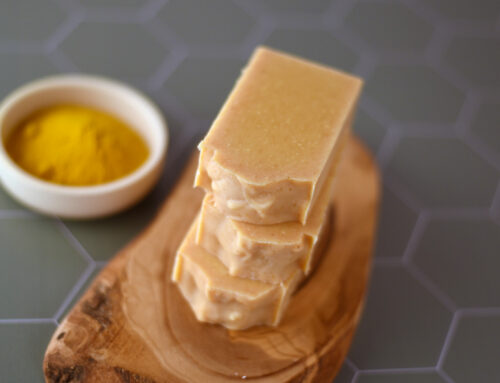
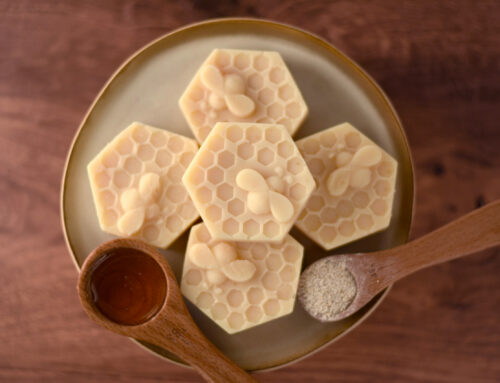
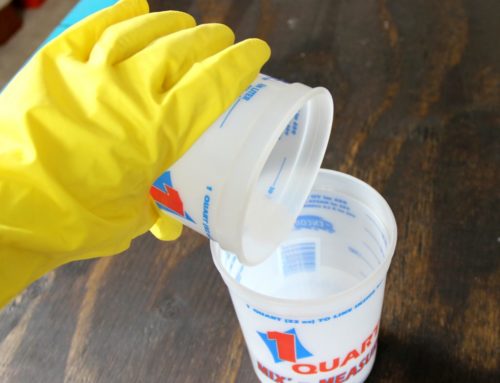

I am not new to soapmaking, but did just make a batch that is still soft after 1 week in the molds. I keep hearing about rebatching. I “think” perhaps my recipe was heavy on water based on some lye calculators I have referenced. If I just heat it up and rebatch it, might that take out some of the moisture? I want to add something to harden it but not sure if that makes sense. If I added some rebatch soap base (like from Brambleberry in WA) could that work? I also found Palm Kernal Flakes but not sure if I can add those to my rebatch or not. Thanks for input!
I got the same problem. What did you do to fix your batch?
i have make soap for some time but now seconded time that the soap is soft, i use pure fat which i fry out .. and very little water, and lye which i use a electronic scale , please help
My soap batter seemed to be taking longer to thicken than normal. I kept waiting I put the immersion stick blender and it was like soup so I thought quickly and I added some African black crumbles salt to the mixture which already had cocoa butter olives and palm and coconut oil , I had already added powdered loofa And it worked out well.
I added 3 tbls Lavender EO to 96 oz before pouring into mold… was that too much?
This was such a helpful guide! Thank you!
I been making soaps for years and today had a very soft soap with floating oil, Not sure why, I still cut it, and laid it on paper bag to absorb some of the excess oil. This is the second time i have done this, and first time the soap went rancid quickly, and got those ugly brown spots.
I will either give this to family and freinds or use myself if it does not come out ok.
In the meantime, i will be checking it daily, attempting to absorb some of the free floating oils with paper towels, while placing it on a slant. to drain.
I tried my first batch of soap ND FOUND THAT IT WAS SOFT AFTER 2 DAYS. I READ THAT SOFT OILS TAKE TIME TO HARDEN AND THE OILS THAT I USED WILL COME OUT HARD EVEN THOUGH THEY ARE SOFT OILS. I WILL WAIT THE DRYING PROCESS AND SEE THE RESULTS. I AM IN THIS TO LEARN.
Hello, I have been soaping now on and of for 25 yrs and only now have I experience soft soap for no apparent reason. The only difference is I change supplies for coconut oil and I have read at Aussie supplies in regard to coconut oil to melt the oil and mix it before using it. I just melted some of it and then pored out the 400gr that I needed, and then used it. I made 2 batches in 2 weeks the same way and they were both soft and yes sodium lactated was us at top % has anyone else changed their coconut oil. coconut oil % was 30 % Supper fat 5% Thank you
Hi Margaret. Coconut oil doesn’t seperate the way palm does. Usually there is no need to melt the whole jar before you decant what you need. I’d find it very odd if the CO was the source of your problem. Would be good to have specific info on the total ingredients in your new CO.
I’ve been soaping for 4 years and have made dozens of loaves of soap. Cold process. I split a batch in half after it had come to trace. One half got about a half teaspoon of titanium dioxide. The other half was split into three cups and coloured with Vibrant Yellow, Blue Vibrance, both from Nurture soaps and a green oxide that I bought on Amazon. I poured the cream half of the soap that had just a appropriate amount of fragrance oil, “Nirvana” by Nurture Soaps.touch of TD in it into my lined pizza box mold. Then on top of that I spread the yellow and then the blue and green. Both the blue and green were setting well. All cups of batter received an even and After two days in the mold, I cut the soap into logs and then bars and the yellow layer was still bit sticky. This was 9 days ago. Today, it was still oddly sticky. I split the layers of a bar to see what was going on and that yellow layer. This was a special order who then cancelled that order. Now I have to sell this soap so I decided to make it more marketable by splitting the dark and light colours and rebatching it.
The coloured layers are just a little too sticky/soft to grate so I cut it all into the smallest cubes I could reasonable manage, about 1.5 cm each.. I have put them into a crock pot on low and added an ounce and a half of water with a tablespoon of salt mixed into it. I’m not adding any more oils. It’s going to take a while to melt because the cubes are not as small as shreds would have been. What else can I do and why did that one yellow layer not set up? I’ve used the yellow from NS before, even a week before and had no issues. I might have added too much FO? The red and green are soft but they dn’t look like sticky custard.
Hi, I am very new to soap making and was doing well until today! last week I did 5 batches of soap using olive, coconut vertebral oils, and castor oil they unmolded well after 24 hours. all done with fragrance oils, yesterday I did my first essential oil soap of lavender. After 24 hours it was still very soft so I waited till tonight and unmolded it is still too soft to cut. my question is, does essential oil make a big difference? I did not use as much I discounted it by %40
Just got my forst loaf of soft soap.. not really soft but much softer than I have had in 3 years. I changed my recipe and use 10% Rice Bran Oil for some of my OO.. I am blaming that.. trying again tomorrow to see if it happens again. if so changing back to my old recipe and will have 5 gallons of Rice Brand oil sitting around
hi – i have a question – again – i made a simple castile soap of olive oil 404 grams – water 133 grams and lye 53 grams – it went so well – came to trace with no problems at all – poured into individual silicone molds and popped away to set up – well 24 hours later they are still runny-ish – i double double checked with soap calc and all if fine – no problems – what do i do??? do i wait longer or do i bin it and start again – thanks
Castile soap takes a VERY long time to harden. I remember seeing a huge pyramid of Castile soaps that were going to sit there for a year. I can’t predict how long it will take to unmold your soap. Just wait. Patience is key. I had some olive oil-heavy Bastille soap in a mold and after a month, I was finally able to pop them out. And two months later, they are [mostly] hard enough to use as embeds. The loaf slice that I moved to my sink (after 2 months) is melting. I estimate 4 months for my soap to fully cure.
Hello blogger, do you monetize your website ? There is easy
method to earn extra money every day, just search on youtube : How to earn with wordai 4
Amanda, I tried your recipe for patriot swirl, including the water discount. I decided to try it in a silicon loaf mold BB 10 inch. I didn’t use an accelerating fragrance oil, but the soap set up pretty quickly. I also used Sodium Lactate.
When I went to un mold after 24 hours, I still had very soft, play dough soap. I know my lye is good and my scale is accurate. Where do you think I might have gone wrong?
Hi I made a batch of soap 3 weeks ago. It is still soft.. Any way to salvage the soap? Should I just let it sit longer? Will it harden eventually?
If I have to re-batch, making a confetti soap or a cool “chunky” soap is my fave 🙂
Could you just put it in a pot of rematch so soap won’t be wasted?
Rebatch
Hmm, “rematch soap” might be a good idea if it goes up against Mike Tyson! LOL
I made a soap and when I poured it started to rain I took soap out of molds and I let it cure for a week but it is still soft it has the look and feel of melt and pour. I made it with a brine water and let the oils & lye at room temperature. when we poured the lye in my husband who is new to soap making said what is this at the bottom, It looked like the sea salt fell out of solution and settled at the bottom of the container and hardened I could not break it up to pour it in,. i tested the pH after 6 days and it is 8. so I think that there was enough lye. but I have never had any thoughts
First time this happened to me was at the very beginning of learning how to soap. I thought I was all set. Amazing scent, beautiful brick red and creamy white color layers. Then, it happened. Sticky, yucky and gross. It looked like a fatty piece of beef steak. I saved that “steak soap” in a plastic storage container for a very long time as a reminder of what not to do the next times I made soap. I still laugh about it even though it was an expensive mistake.
Hi there, I have been making soap for over 6.5 years and just a few days ago made 12 cupcake soaps and disaster! Well not quite. They are STILL sticky and in their silicon moulds but I think there are two possibles at play here. One is that the studio was really quite cold and I mixed at 25 degrees C (usually at 38) and secondly too much water!Lye was at 237 g and water at 550 g. This is a recipe I have been using for years and its never failed me until now. The other issues I believe may be to “blame” are my scales that kept cutting out on me. I have a big 30kg electronic set but of course can’t measure very small amounts so I used my trusty small ones. These have been great in the past and never failed, until now. Moral of the story. Make sure you use plug in scales, you have spare batteries and that you make soap in a warmer room temperature. Now just have to wait this out and fingers crossed. Thanks for the article Amanda.x
Thank you so much for this post. I am not “new” to soapmaking, but not old either. Where I live, weather plays a HUGE role in how practically ALL my soaps turn out. 2017, I am going to keep a temp/weather/HUMIDITY log for a bit. Wintery AND rainy days are the worst!!!! I made a soap with Sunflower oil…..it did not want to harden. So stuck it in the crock pot finally. I loved the “clean light feel” of that soap…..maybe I will make it the same way and name it “rainy Day”…..lol. I have the perfect fragrance FO 🙂
I will say this much…on high humid days, I have sat and watched beads turn to liquid in lightening speed! I don’t even like opening the jar, becuzz those beads at the top left after pouring, r doing the same thing! To date, I am still stressed when pouring it. Before I go any further…..I am wiping the lip and and cap…fast as I can go… capping and sticking the rubber glove back on…….
I havnt bought an official airtight bucket yet. BUT, Before I ever open my jars, I place rubber gloves over them all, tying all the fingers together first. Place in Zip locks, Wrap in garbage bags and I have one of those super thick Comforter Bags, that I then stick them in and roll tight. Why all this?……
I was one of the blessed few to receive bad Lye. My 1st 10 batches of soap were FAILS! Which I then rebatched! So 20 batches for a total beginner! It just devastated me! But I wasn’t about to give up, after all the studying I had done…buying every imaginable gadjet possible…along the way. I KNEW I could do it….I took a break and took myself away from it and began to read. THE LYE!!!
I’ve made hot process soap which normally never fails, with glycerine , brown sugar,vodka, coconut oil, a little castor oil, but after two months, it’s still like very soft fudge,can I reheat to harden? I think I might not have stirred long enough to saponify.i didn’t wait for a true trace
hi – i need your help if possible – i made a batch of soap from a castile recipe that i always use – i needed it smaller so put it thru the lye calc – it said 132 grams lye and 350 grams water – if i do what you suggest and that is only use 246 grams of water this will make my batch smaller – not by much – but i need every gram for my mold – i am wondering though if i should just go with your suggestion of the smaller amount of water coz its 24 hours and the soap is still a little bit soft or should i just not be so impatient and wait another day or 2 – sometimes i get very confused and start 2nd guessing what i am doing – it went together beautifully – colours fantastic and perfume hasn’t disappeared its still strong – help??? what do i do??? thanks liz
I made a small amount of cp soap (testing FO) and afterwards I realised I didn’t have enough sodium hydroxide in my lye solution, will the soap set at all? Or will it just stay runny? Thanks
I used a recipe with coconut oil, palm and avacado oil. I let it sit for 24 hours and that top is still mushy and the middle very soft. I would like to read batch cause I think I may not have used enough lye. I have never done this though, what do you recommend?
I used a recipe with coconut oil, palm and avacado oil. I let it sit for 24 hours and that top is still mushy and the middle very soft. I would like to read batch cause I think I may not have used enough lye. I have never done this though, what do you recommend?
I did use too much water in a batch that is one month old. It is still a little soft , I had forgot I had half the recipe. Will it get harder as time goes?
my tip is to use coconut oil.. or and… castor oil in your recipe makes a firmer bar of soap.. also place in oven preheated to 170 degrees F.
Turn off when reaches temp and leave in over night. Makes a nice hard bar of soap.
I just made coldpress soap that I wanted for babies so found a recipe with Olive oil, jojoba, and coconut oil. I added Lye how I was supposed to and measured everything( i have a scale i ordered and was off by one or 2 numbers as i weighed every ingredient)
I left in mold for 3 days and removed to cut bars and its soft, and heavy. I guess its gel like….? they are on racks drying and Im wondering if they will get hard seeing they are so moist…but they are holding up being cut. sorry, I am a newbie. Thanks for any advice.
you need to make sure it is not lye heavy esp for babies.. get PH paper at drug store and check it before use.. touch it to your tongue if it bites so to speak its lye heavy.. you must be very precise in oils and lye.. get a scale that is electronic and goes to a tenth of an ounce. also coconut oil can be very drying so.. less is more w babies. i would be very careful.. sounds like it would be light on the lye though if its soft. but just be careful..
I just made my first batch of soap and was afraid I did it wrong, but I just need to give it more time to cure. It sounds like the results are better when made on warmer days? Thanks for all the tips- I’m thrilled to enter the world of soapmaking!
For a harder bubbly bar, add salt and sugar, both at 1T per pound of oil, dissolve in recipe liquid. Salt weighs .70/T and sugar .50/T. Soap at cooler temps and add salt/sugar solution just before blending to avoid chemically scoring the sugar. The many vendors I’ve contacted say their vendors can only say their Sodium Lactate is made from “beet or corn starches”. I have an anaphylactic corn allergy. More and more folks are sensitive to GMO corn and it’s many derivities like SL, even in teeny amounts. Happy soaping!
Thank you for sharing these tips for soft soap. It is so frustrating to unmold a soap that is too soft to cut; I feel your pain! =)
The only time I’ve had a super soft soap is the first time I made castile. If you are making castile, discount the water!!!!!!!!!!
The website field won’t accept my url. My website is wildgardennaturals.com
You’re absolutely right, Debbie, soap is softer in a silicone mold, and takes longer to harden. The tip on sodium lactate (above) is one I see constantly if using silicone molds. I prefer wood molds, myself, then you can throw it in the oven to force it thru gel. I always gel my soap, I like the colors better, however, never gel a milk soap!
Excelente Tip.
The only time I have had soft soap so far (she said crossing fingers!!) was when I used a new recipe with a combination of castor and sunflower oils ….. I had to wait 4 or 5 days before it was hard enough to unmold. Amazingly, that soap turned out to be a great bar – so the only problem with it was the time it took to harden up. I love what each of these oils brings to a soap bar, but have never used them together again!
Another experience I’ve had is that soaps made in silicon or plastic lined molds, harden more slowly than those in my acrylic mold. Not sure if anyone else has noticed this …..? I don’t gel my soaps, so this may be a factor. And I’ve always wondered if it might be related to either the insulating qualities or air permeability of the different materials.
Hi there
Thanks for this great info. In my experience if my soaps gels it is softer. My ungelled soap is much harder and I prefer not to gel.
I’m not one who gels, so putting my loaf in the freezer keeps it from gelling and makes it hard enough to unmold easily!
Great advice! Thanks, Shannon!
I put my soaps in the frezeer to avoid gel and also avoid súper Heat. Great tip!
Use the soap yourself, don’t try and sell it 🙂
Yes! I probably should have mentioned that in the blog post. When soap is not 100%, use it yourself. Don’t sell it. 🙂 Thanks, Eddy!
Oh my goodness! Thank you SO much for this post. Just yesterday I did a private consult with Jennifer Grimes (Nova Studio) about this VERY issue. I now have three batches of soft soaps sitting on my drying rack. I have NEVER had this issue until now. My husband asked how an experienced soaper can have this problem. One potential problem I’ve identified is that I go for a large amount of super fatting. And when I add oil to blend my micas I do not take it from the batch but randomly add it. My tip: be picky and precise when adding oils to blend up your colors and go for a lower super fat. Thanks again for writing on this!
Great tip! Some soapers do add a lot of oil by mixing in micas and such. That is so important to keep in mind. Thanks!
I have to thank Jennifer Grimes for that one…she caught me out on it! I must say, I am not sure why softer soap can’t be sold if it hardens up…maybe it is more susceptible to go bad??
i used to make soap in Florida and never had an issue with soft soap, until I moved to New England. I could just leave it out and it would go through gel and unmold easy. But now living in NewEngland with colder temps I would get soft soap that needed days to sit in a mold. I’m impatient. I now set the oven to 170,shut it off and then place the loaf of soap in there to keep warm and go through gel. It unmolds beautiful. This is a game changer for me.
Forcing gel in the oven is great advice. Thanks!
Oh Yes ! Also you are Cooking your soap. You dont need yo wait for curing.
Can you put it in airing cupboard in cold climate to make sure it unmolds harder ?
Try using sodium lactate at 1 tsp per pound of oils. I’ve just started master batching my oils and one of my batches was too soft because I forgot to weigh the oils.
I’m personally not the biggest fan of sodium lactate but I know many people who use it! Great tip!
I’ve heard people talk like its the best thing since slice bread. Can you give us your reasons for why you’re not a fan of sodium lactate? I’d love to learn more about it.
My tip is, weight an article on a new scale (for instance a large decorative garden rock) write the measurement on the rock. Once in awhile check the weight the rock to make sure your not needing a new scale or battery. I never new the water discount could be changed until I started playing with swirls, that’s when my soaps seem to stay soft, cutting the log (if possible) helps them to harden up.
Great tip, Joy! Thank you!